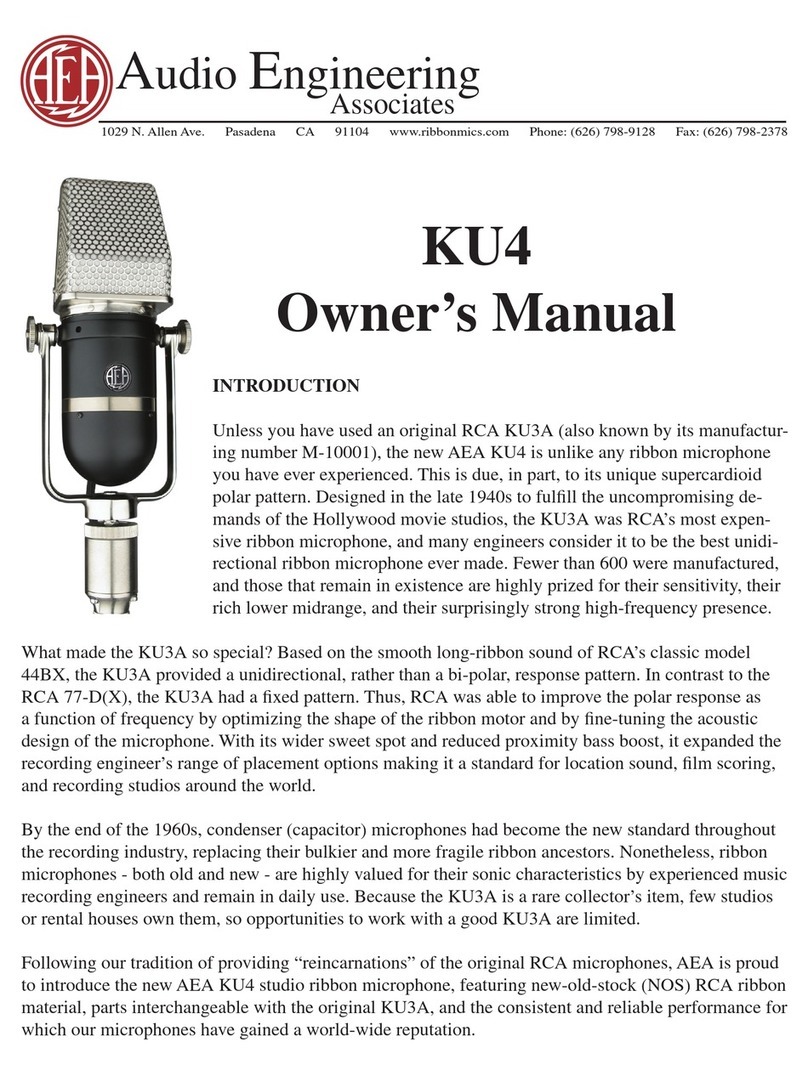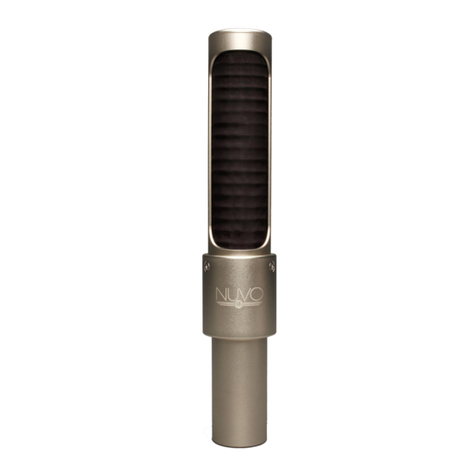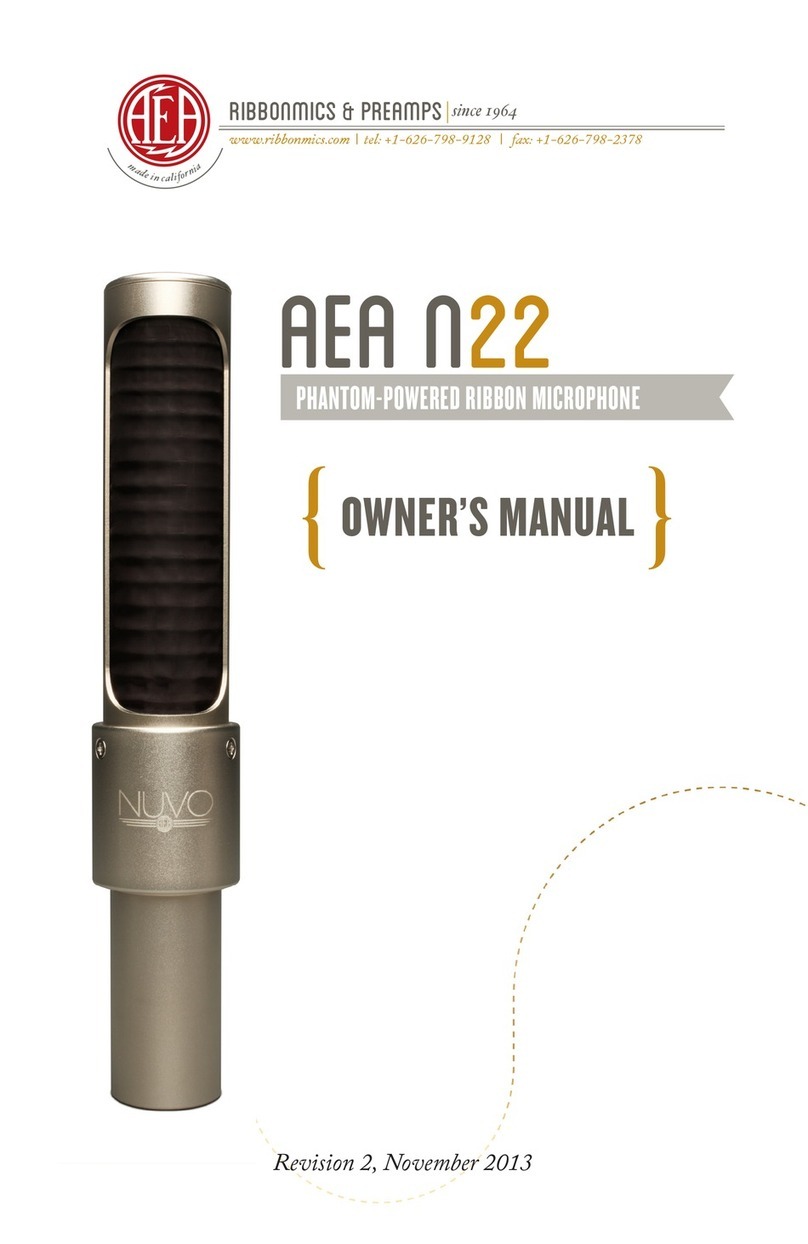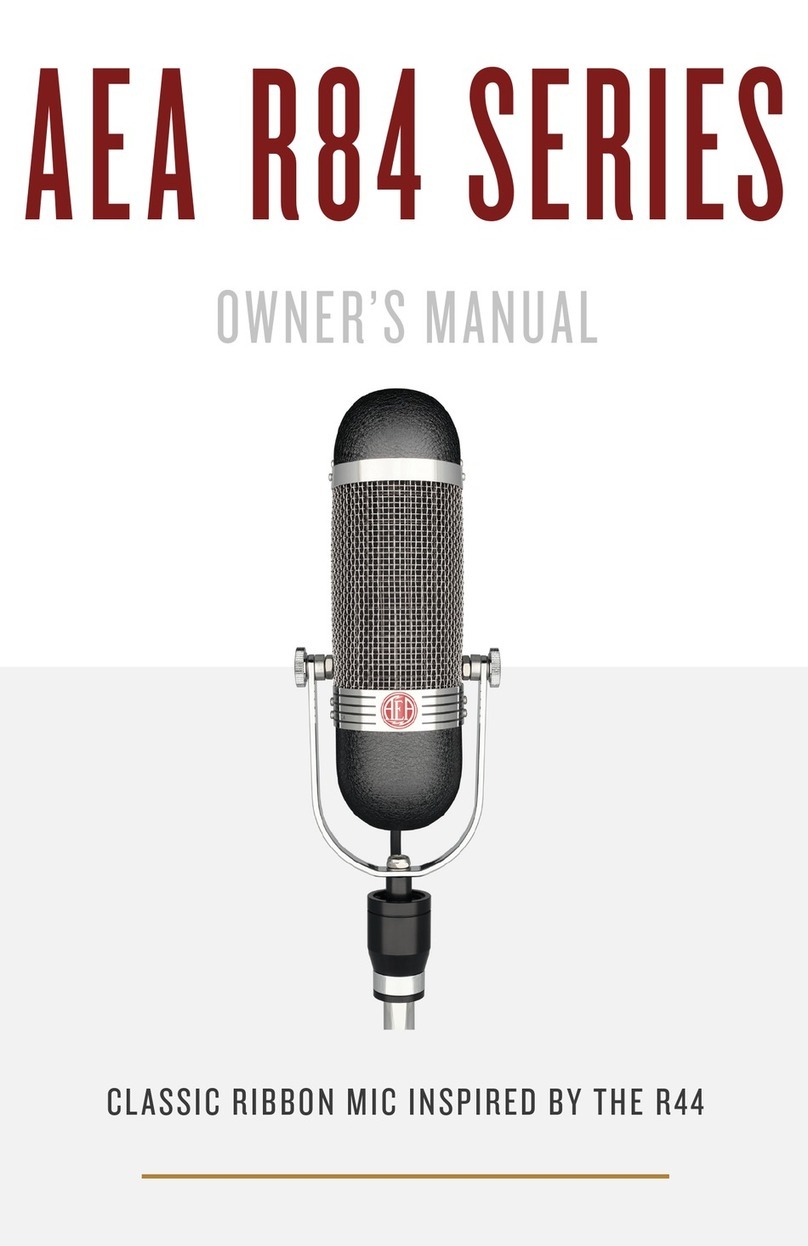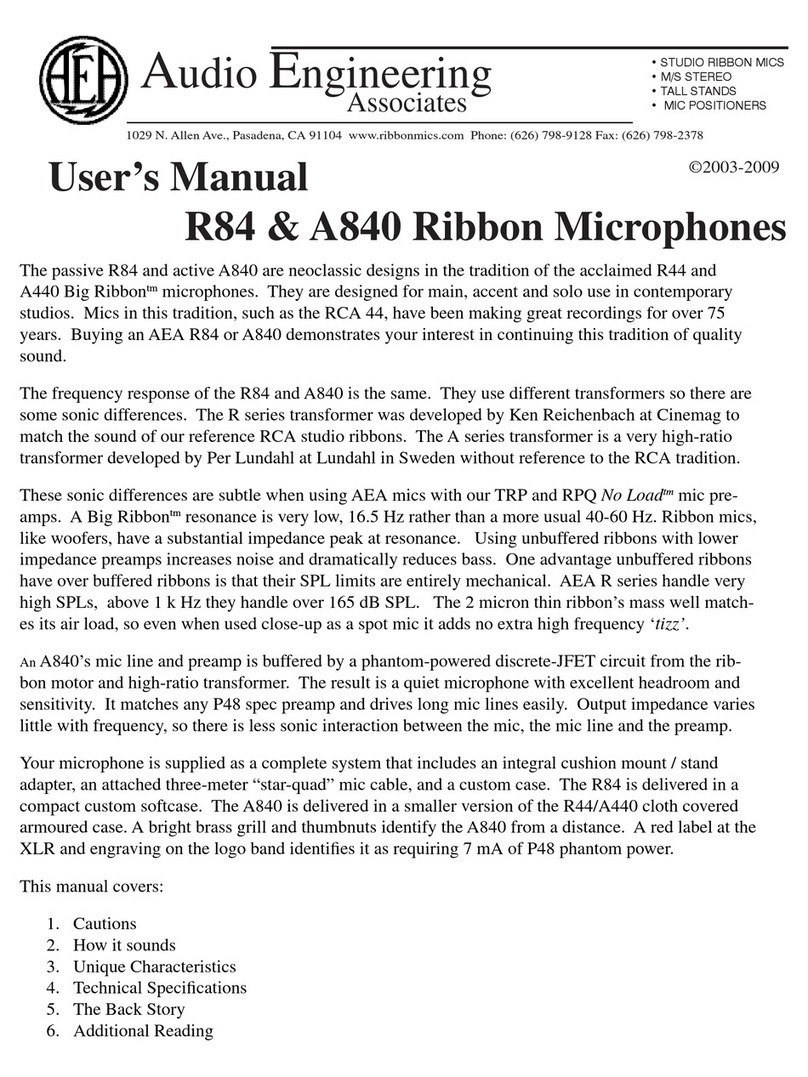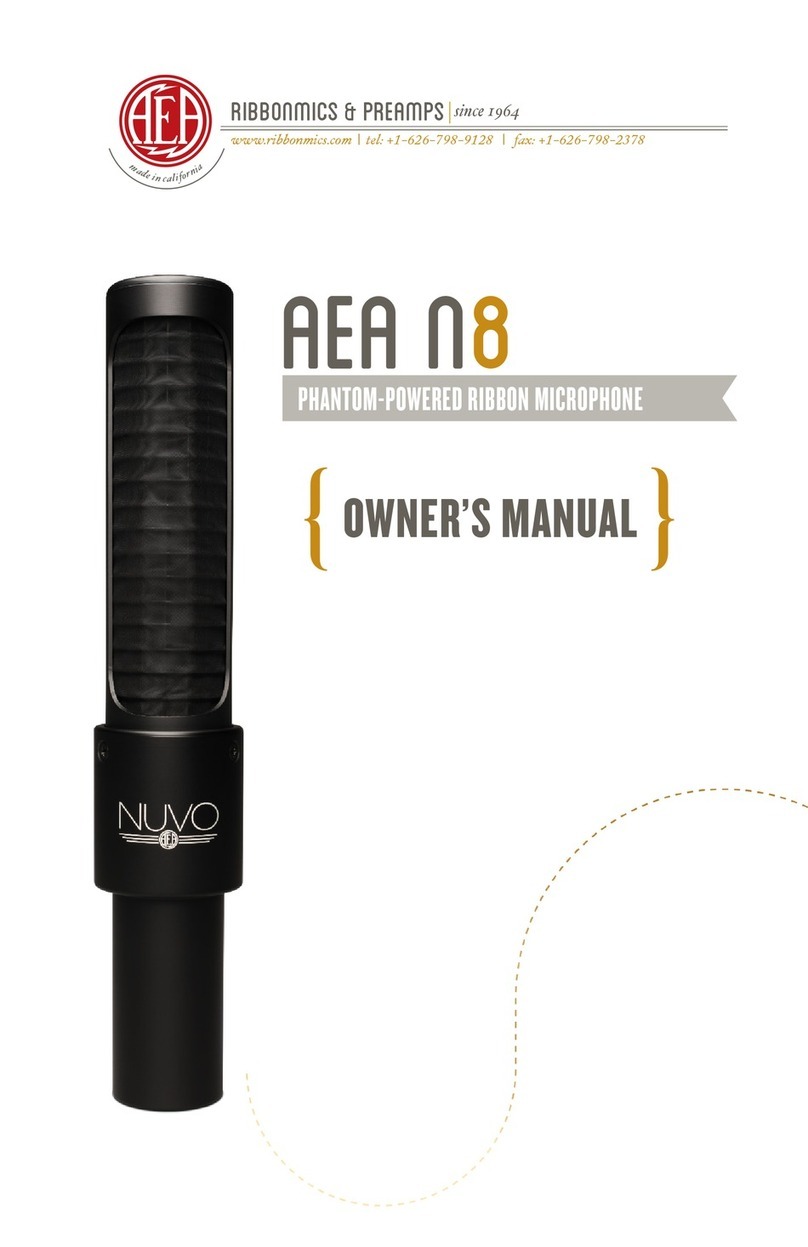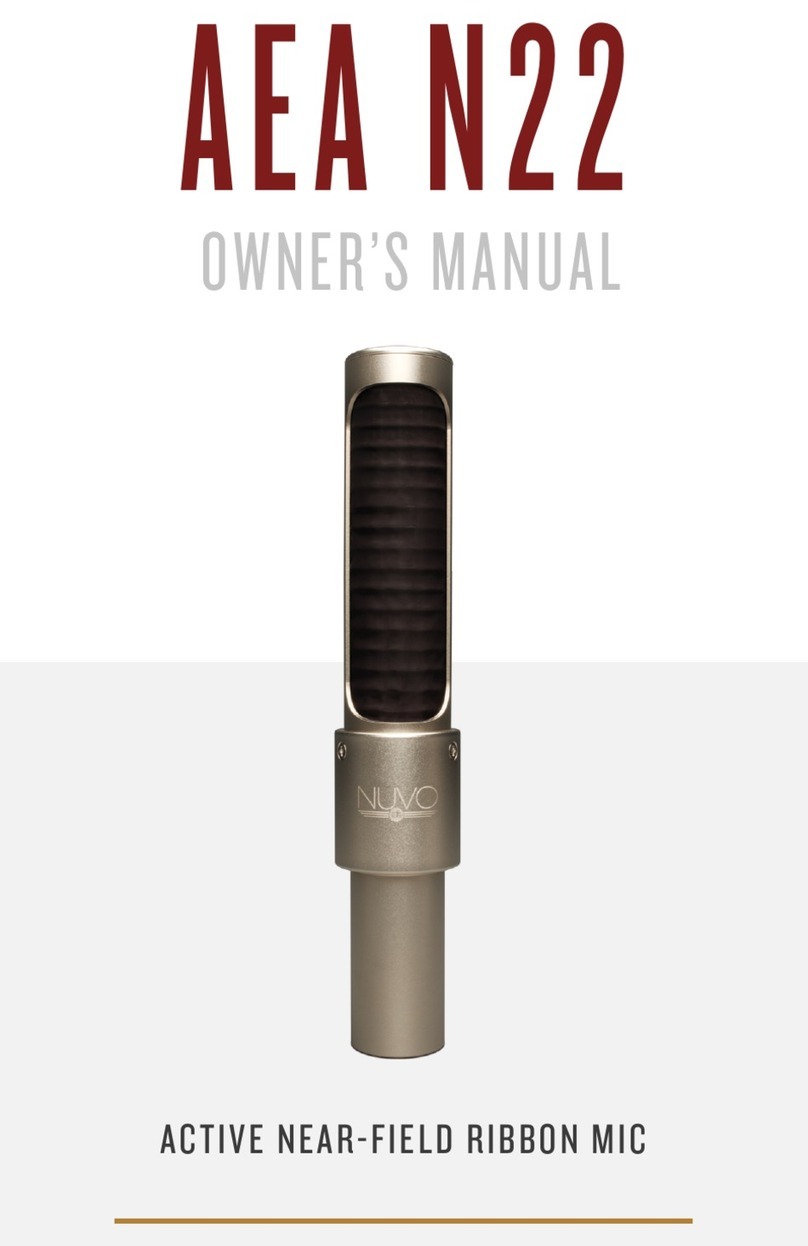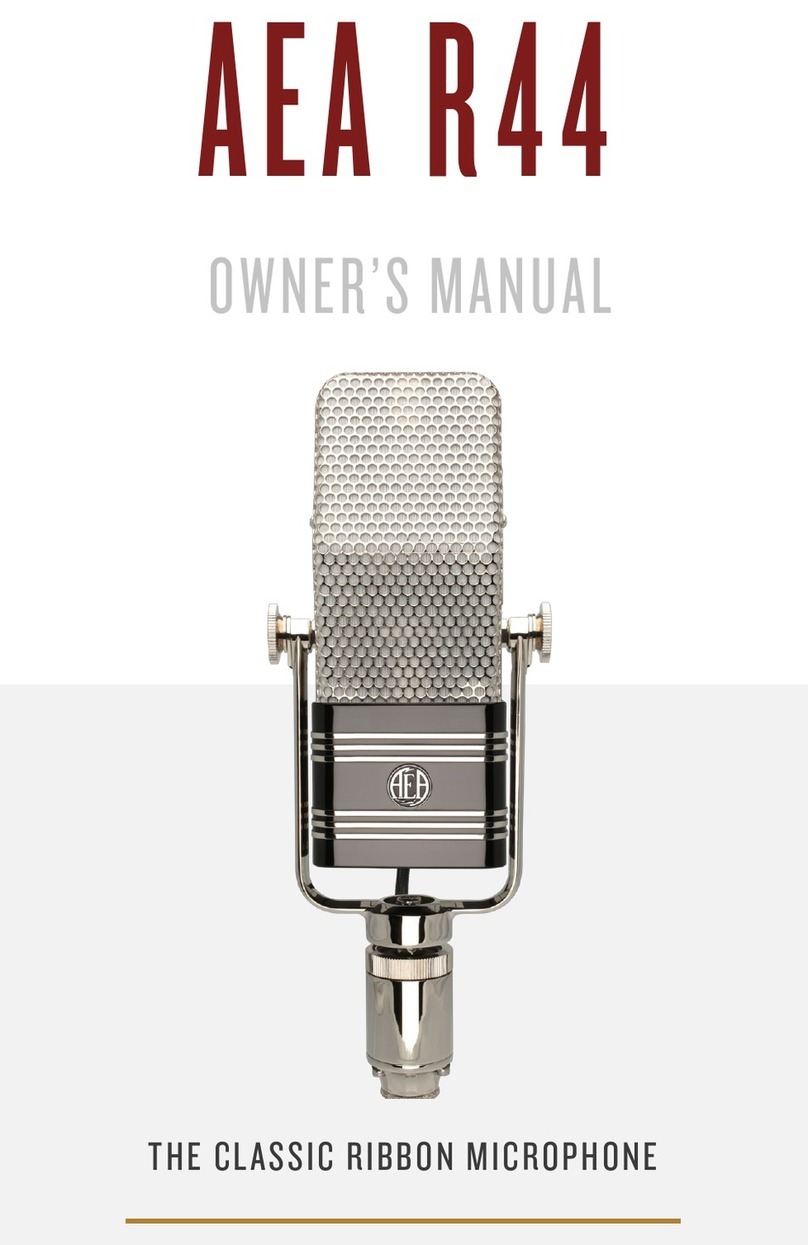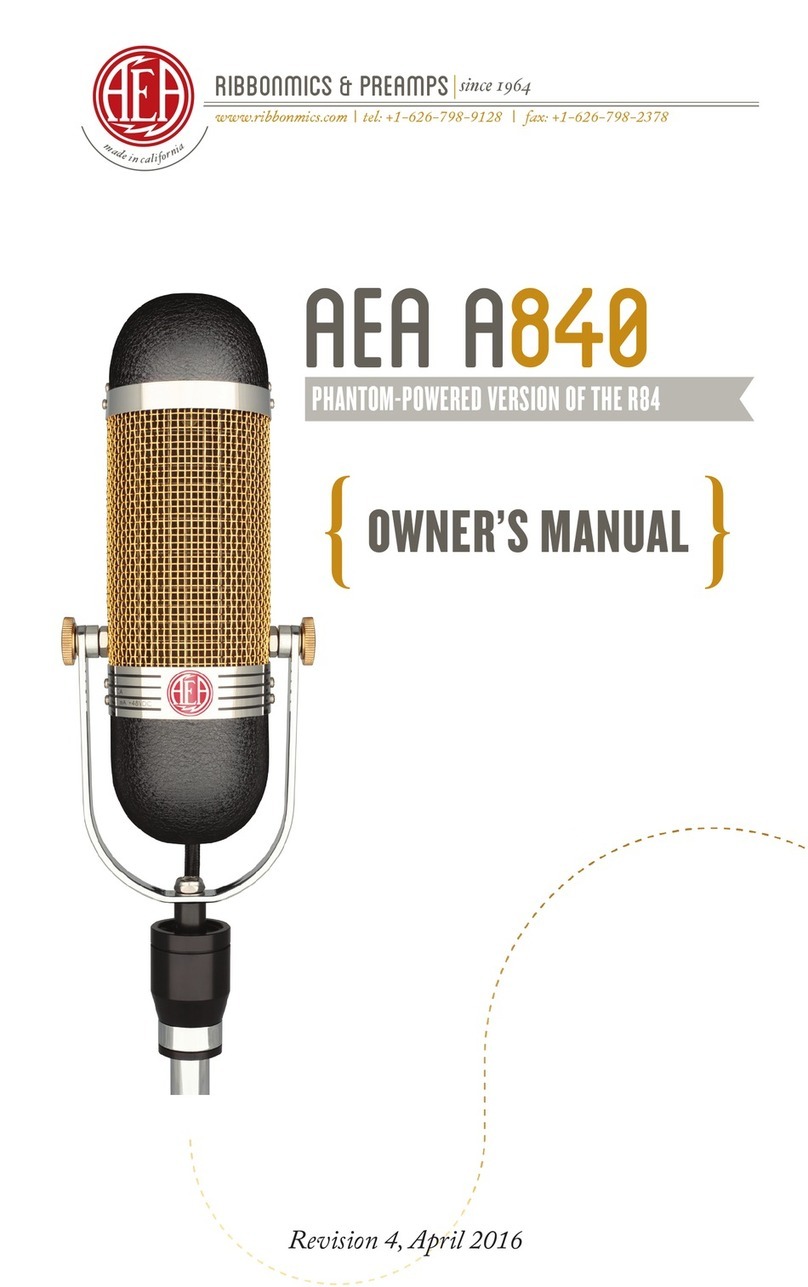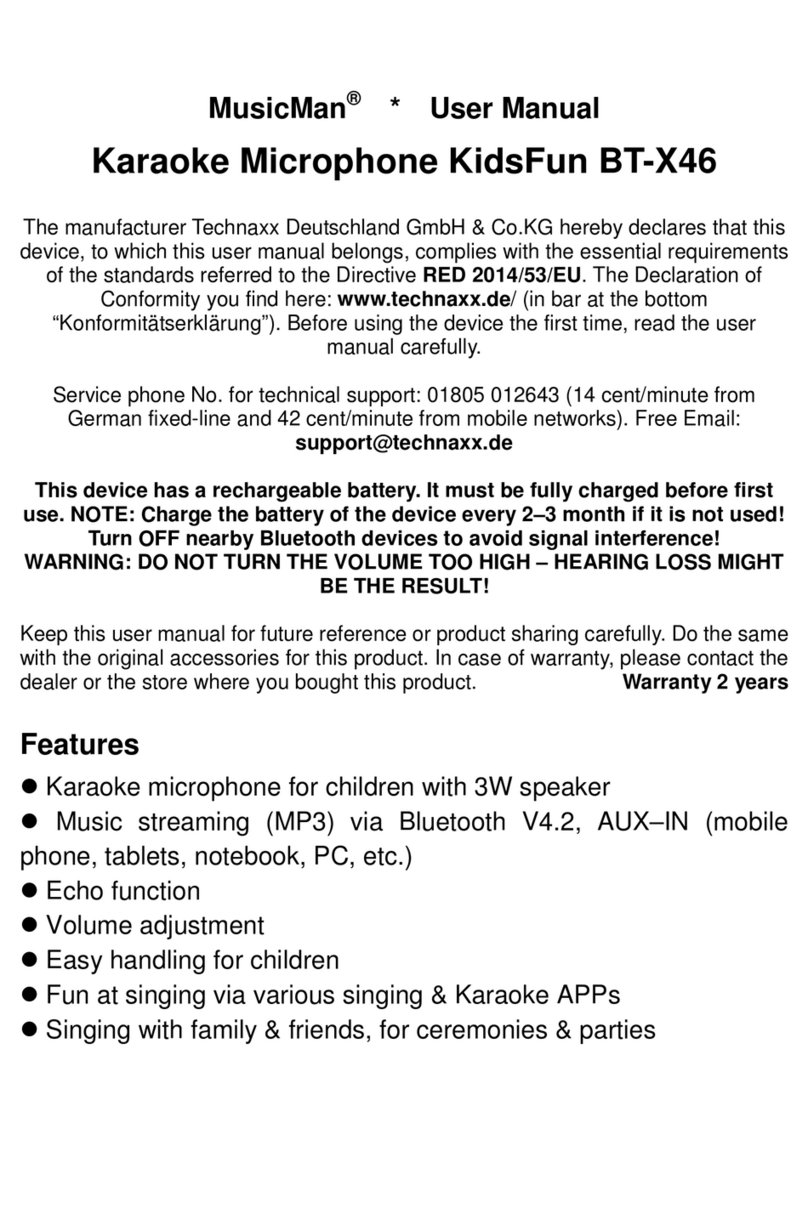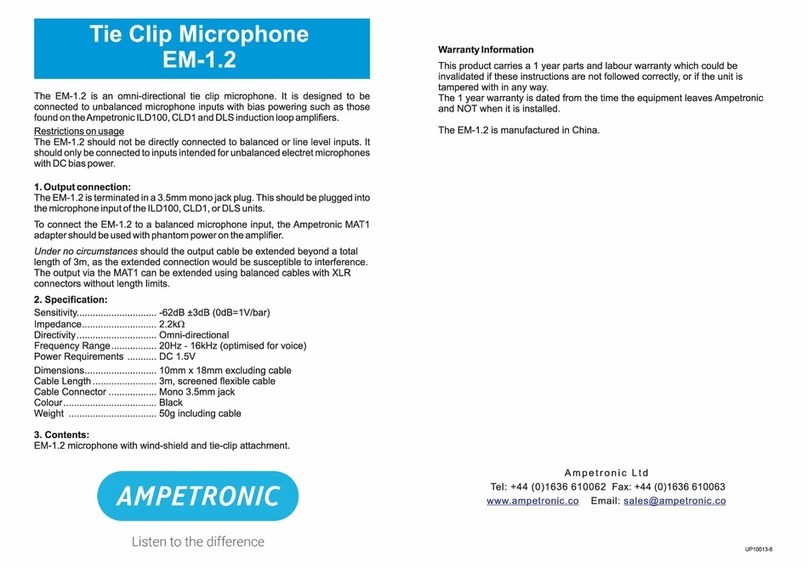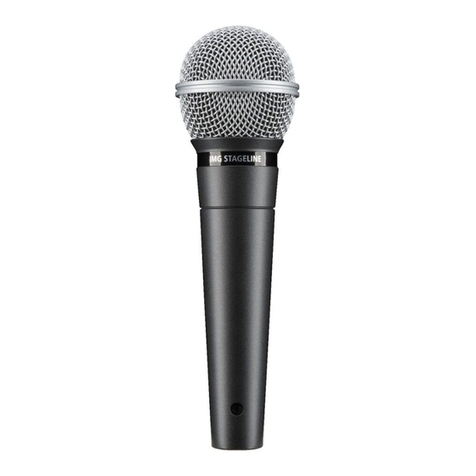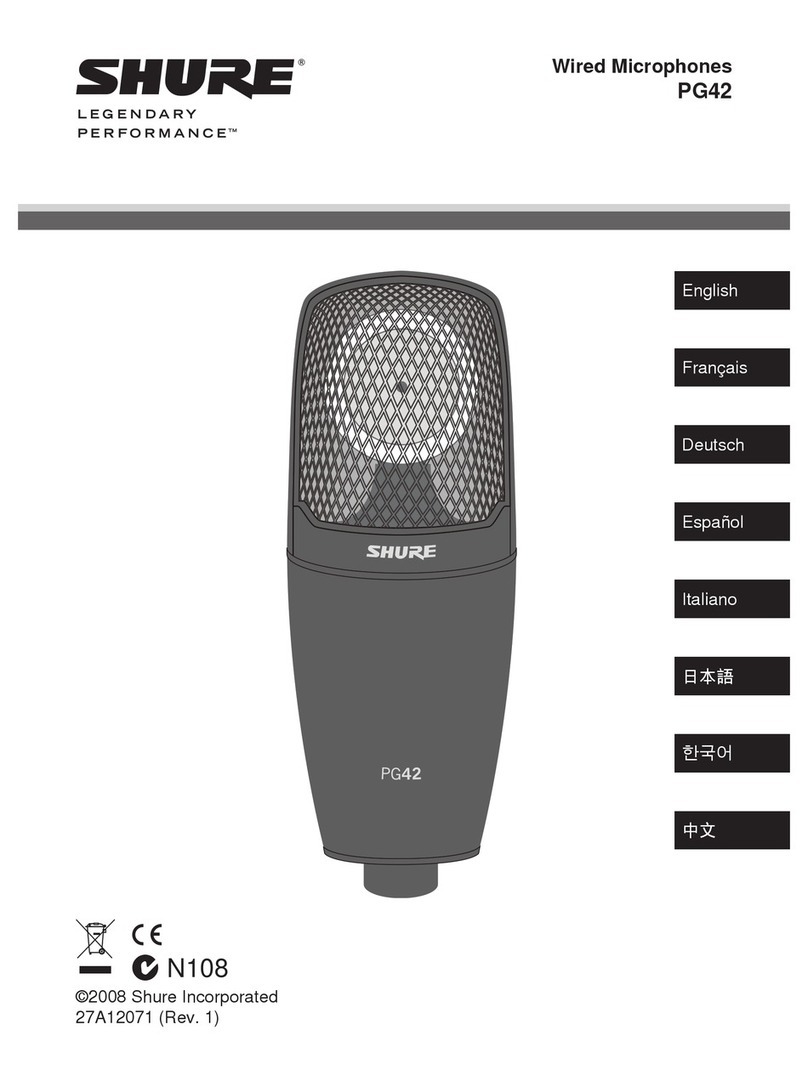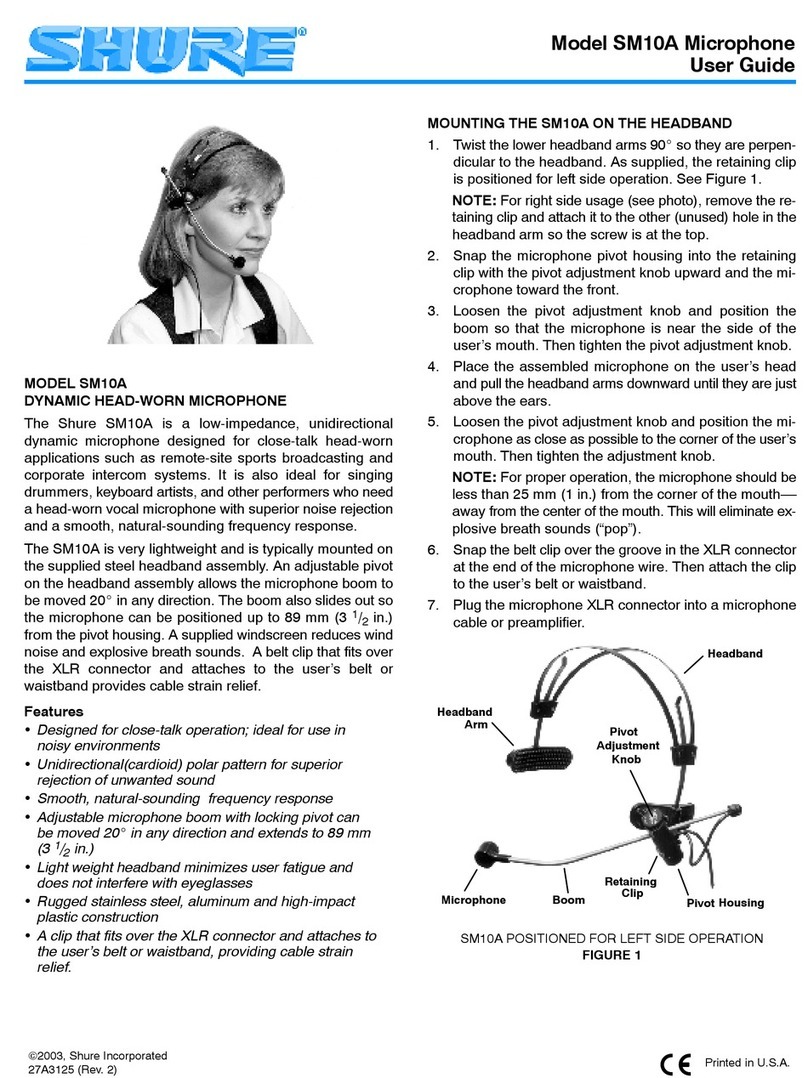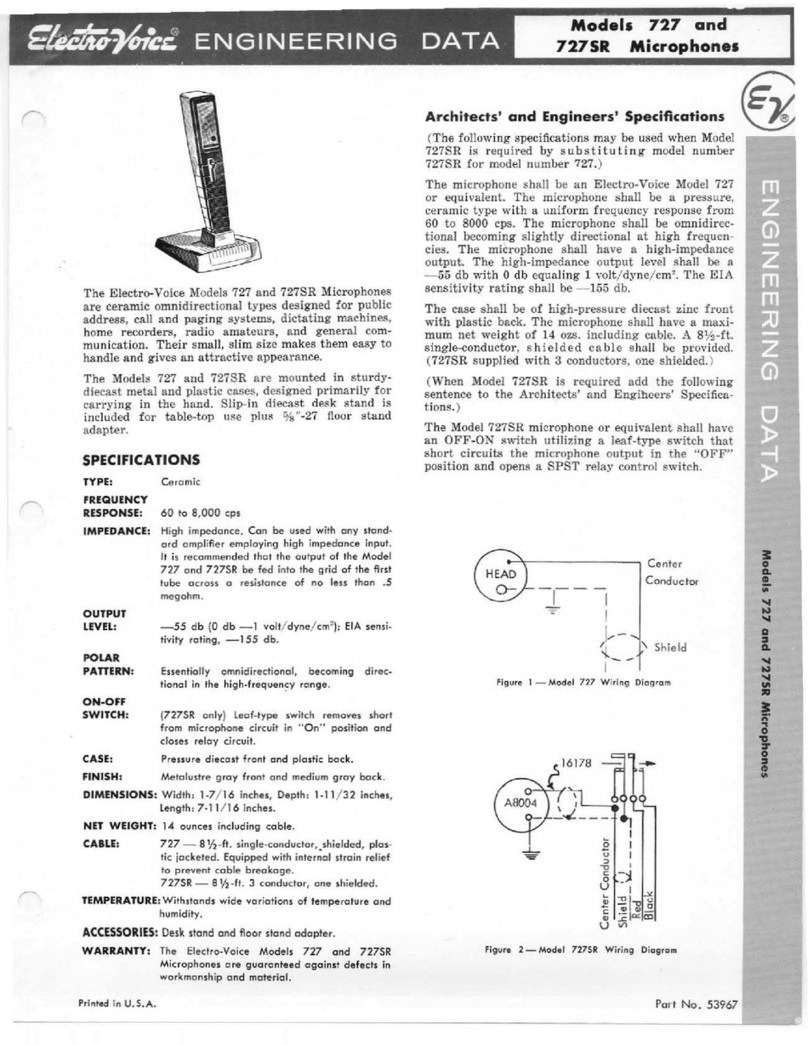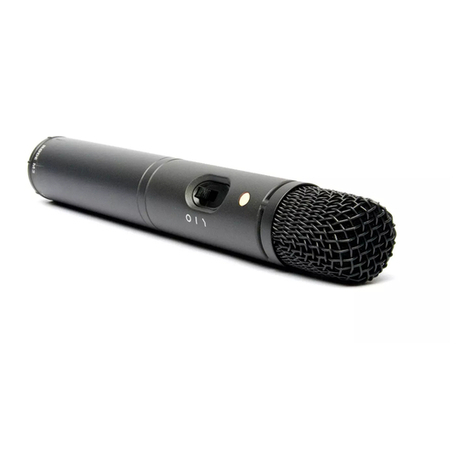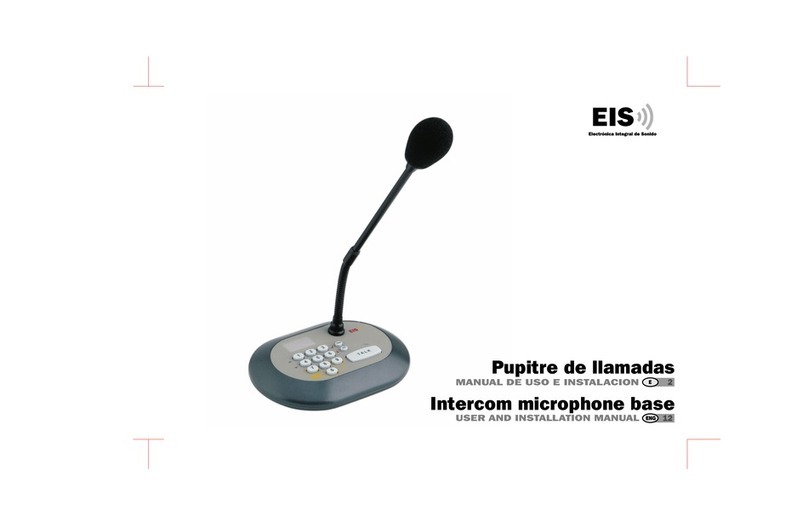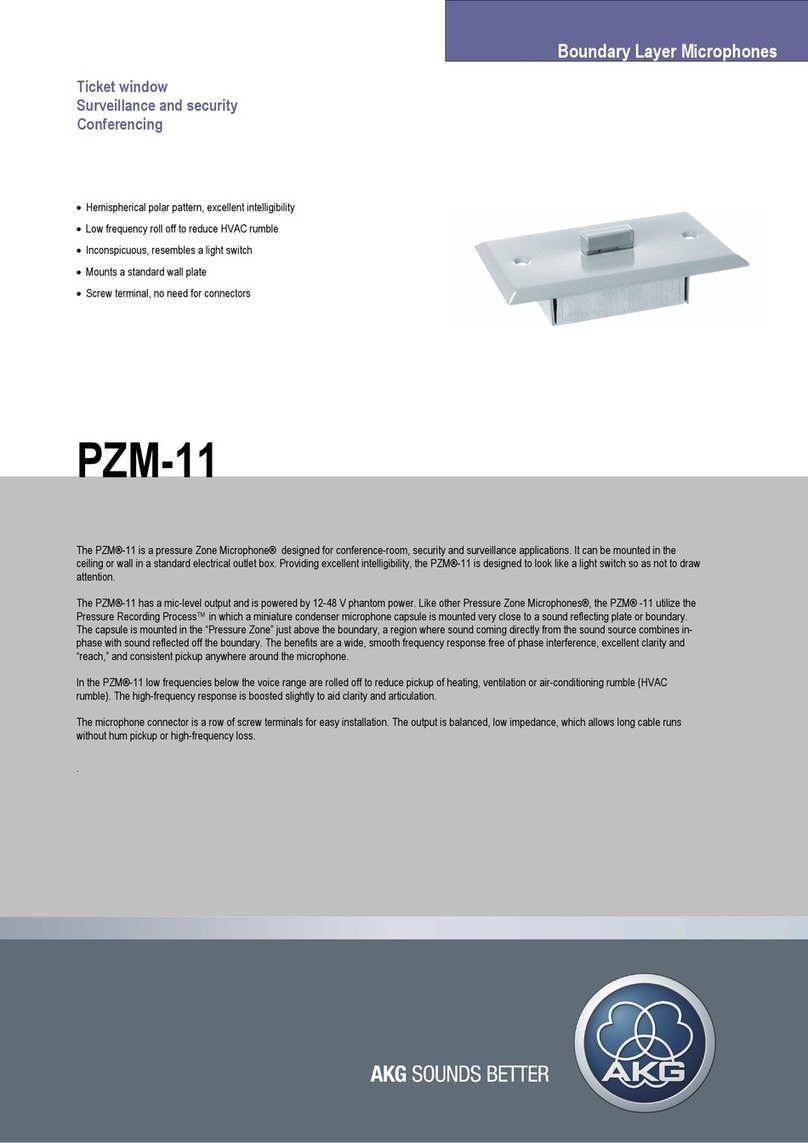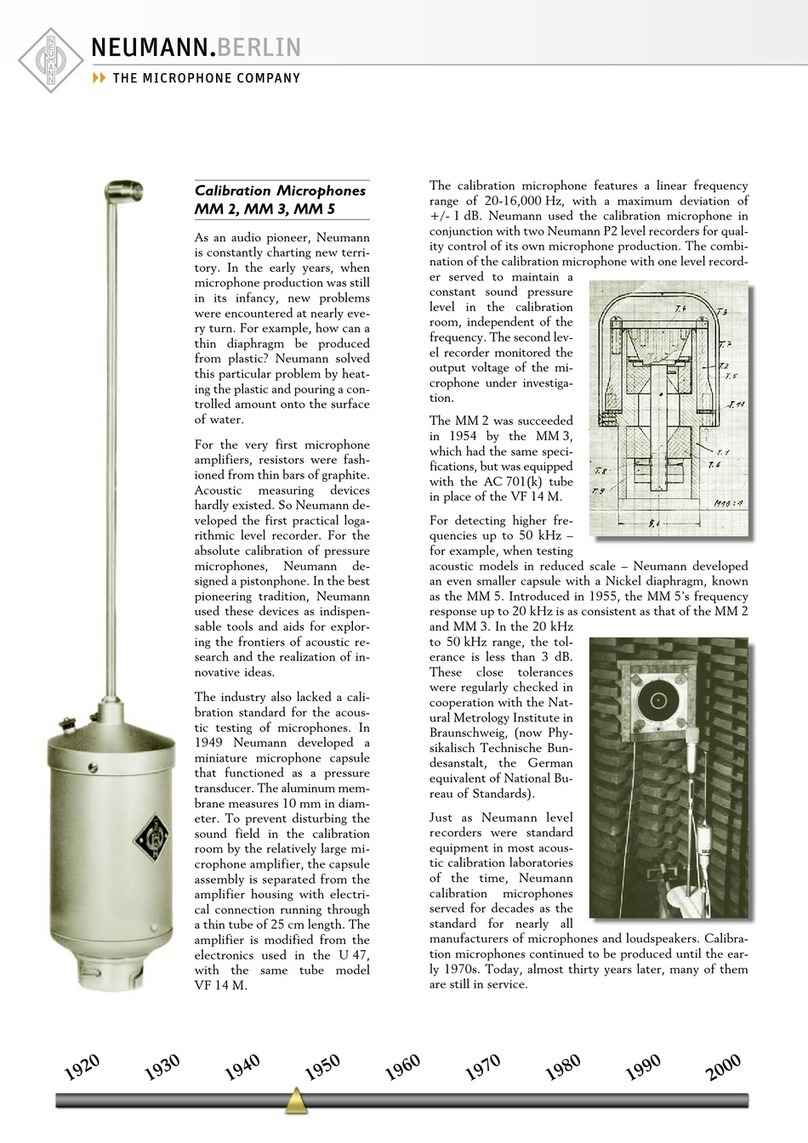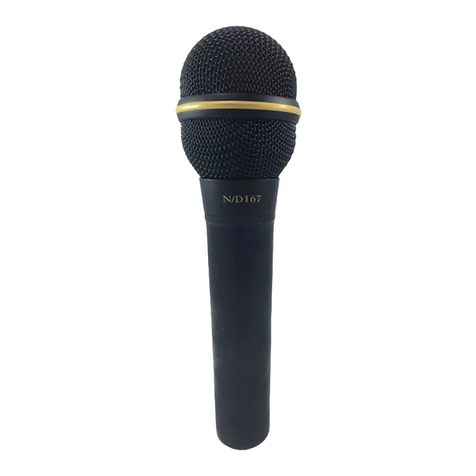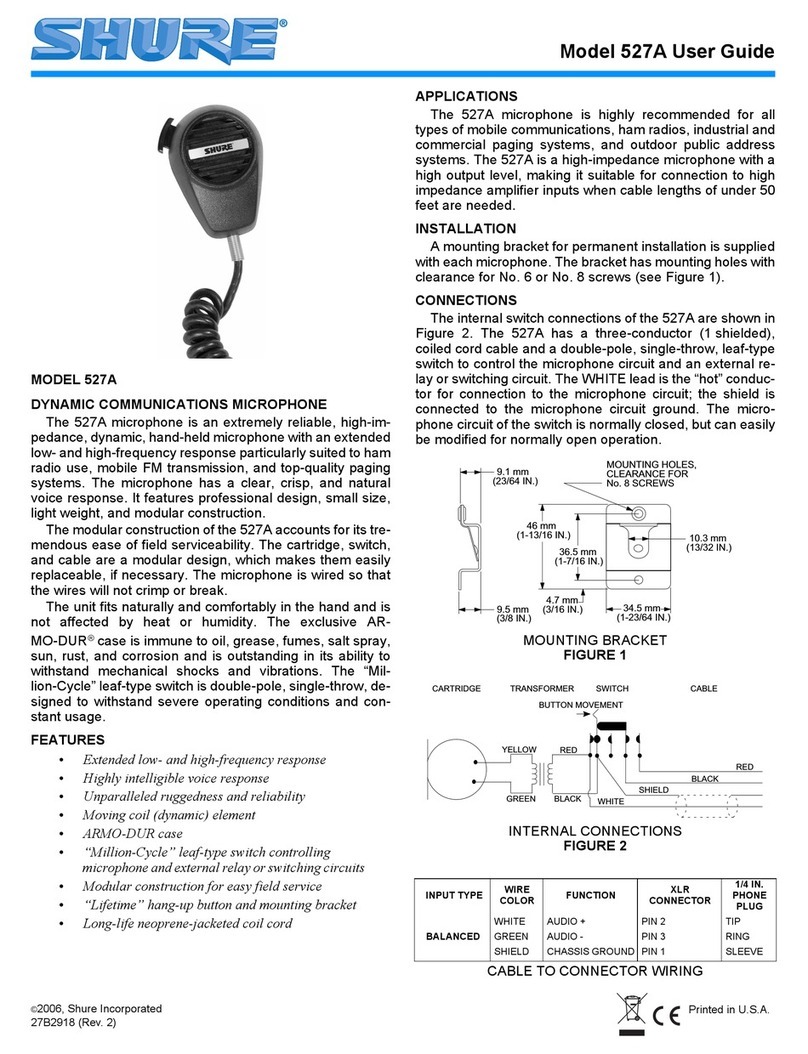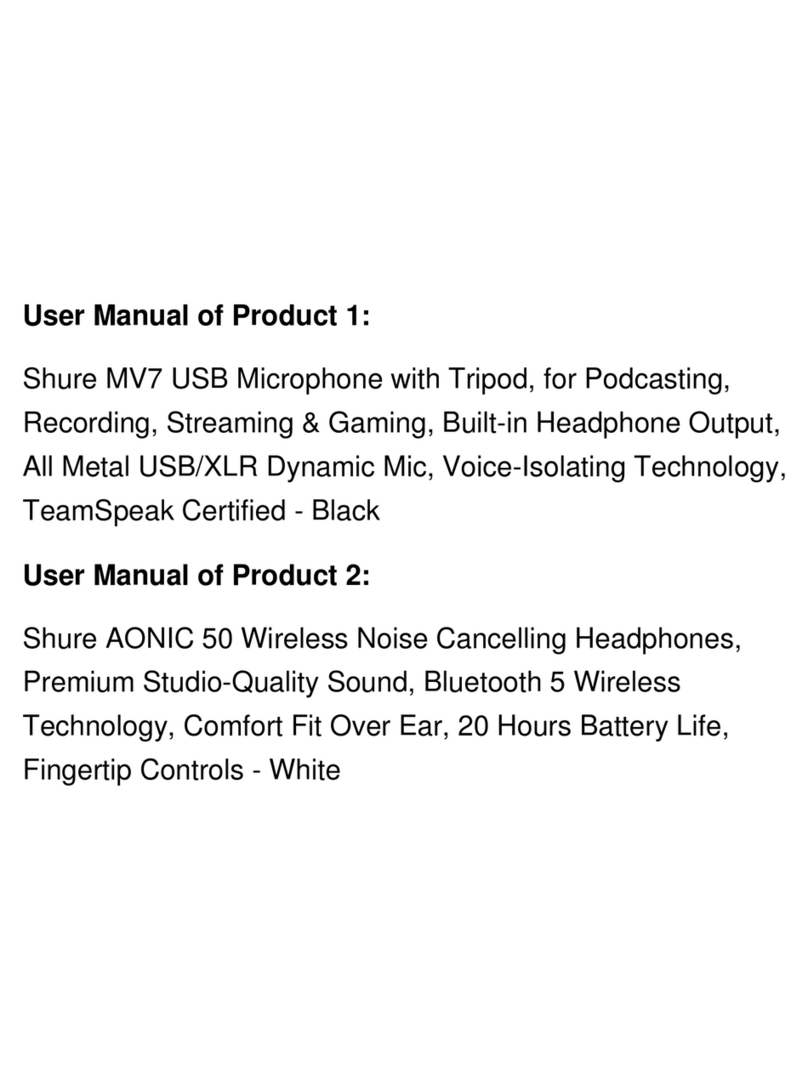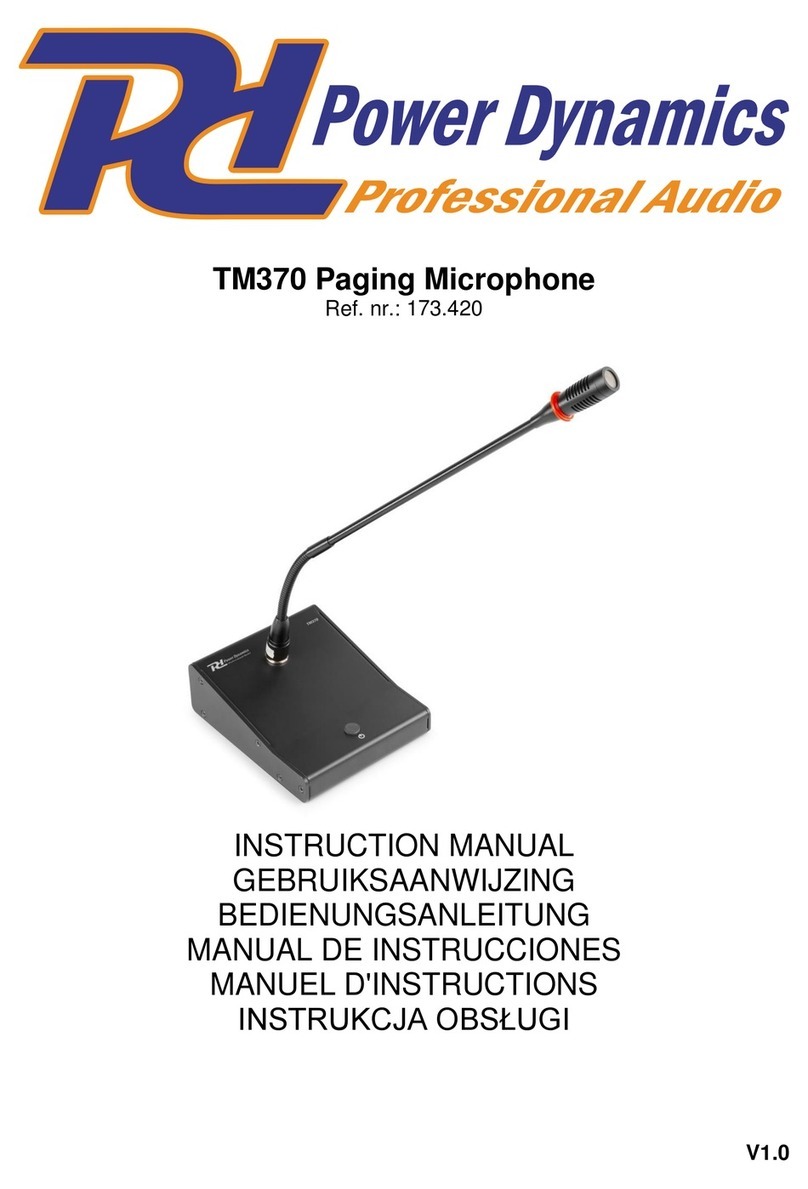AEA R44ACE User manual

OWNER’S MANUAL

AEA R44ACE
Congratulations on your purchase of the AEA R44ACE limited-
edition microphone and welcome to the AEA family. The ACE
delivers a classic sound with a modern aesthetic. Combining
components of the R44CE with the active elements of the A440,
the R44ACE heralds the 20th anniversary of the legendary AEA
R44.
The R44C, AEA’s museum reproduction of the RCA 44BX, was
first produced in 1998. To celebrate its 20 year run, we developed
the active, cost-effective, and stylized R44ACE to memorialize
the spirit of the R44 while making it affordable and appealing to a
newer generation of ribbon mic enthusiasts. The ACE is an exciting
amalgamation of 1930s technology and modern production that
delivers the R44’s classic sound in a new context.
The R44ACE utilizes new old stock RCA ribbon material; it boasts
a full, rich tonality with generous low end and the 44’s signature
proximity effect. The active electronics within the R44ACE result
in 12dB more output than the original R44CE, so it’s highly useful
when recording quiet sources and is optimized for use with any
preamp.
The R44ACE is handcrafted in Pasadena, CA, U.S.A.
LIMITED EDITION ACTIVE CE
2

3
WARRANTY
SUPPORT
Your R44ACE mic comes with a one-year limited
warranty on parts and labor, shipping not included.
Registering your product with AEA will extend the
warranty to a full three years.
Register your microphone at AEAribbonmics.com/
register-your-aea.
If you should encounter any problems with your
microphone or have questions regarding using your
R44ACE mic in specific applications, please contact our
To talk to a live human being, call +1 (800) 798-9127,
between 9:00 A.M.- 5:00 P.M. PT Monday through
Friday. AEA's repair center is located at 1029 N. Allen
Ave, Pasadena, CA 91104, U.S.A.

GENERAL GUIDELINES
PHANTOM POWER
Your microphone is a valuable and important investment. Like any
piece of recording equipment or musical instrument, it requires
common sense and good basic care to keep it working properly.
Given simple, basic care, your new microphone will perform
admirably for decades.
The R44ACE is a phantom-powered ribbon microphone. Although
the R44ACE needs a standard 48V phantom power source to
operate, it is recommended always to disengage phantom power
before plugging and unplugging any ribbon microphones.
The phantom current draw for active AEA ribbon mics is 7
milliamps. IEC specifies that P48 power should be able to deliver
10 milliamps per input. Some USB and battery-powered audio
interfaces do not deliver this. Please check the current values
available on your unit to ensure the best performance.
MICROPHONE STORAGE
Keep the microphone covered when it is not in use. Keeping the
microphone covered when it is not in use will reduce the possibility
of damage that might result from a sudden gust of air coming from
air-conditioning or an open door or window. Place the supplied
protective bag over the microphone when it is not in use. For long
term storage, place the microphone in its protective case. Minute
iron particles, sometimes known as “tramp iron,” are common
within our environment. AEA ribbon microphones contain
powerful magnets that produce strong magnetic fields. These fields
can attract any ferric metal near the microphone that, if they are
small enough, can penetrate the outer screening and work their way
inside the microphone. Over time, this “tramp iron” can build up
4

sufficiently in the magnetic gap to rub against the ribbon causing
distortion, electrical shorts or tearing of the ribbon. The best
prevention is to keep the microphone in its case or covered with the
supplied plastic bag when it is not in use.
5
AIR TURBULENCE
Never expose the microphone to strong air turbulence. AEA ribbon
microphones can withstand very high SPL (Sound Pressure Level)
without difficulty, but can be damaged easily by a sudden, strong
gust of air or high levels of very low frequency sound waves (like
from a kick drum or bass cabinet). This can stretch the ribbon,
causing the microphone to start sounding flabby. Sources that may
produce strong blast of air, such as the bass port on an electric
guitar or bass amp, a guitar being plugged (or unplugged) while the
amp level is turned fully up, an on-axis kick-drum hole (particularly
with a port on the head), are potentially damaging.
To avoid possible damage, follow this simple procedure when
positioning the microphone called "The Hand Test": put the back
of your hand where the mic will be; if you can feel the motion of air
on your hand, place a pop-filter between the microphone and the
source of the wind gusts or simply pull the mic further back. When
recording kick drums or bass guitar cabinets, angle the microphone
to make sure that no wind blasts hit the microphone directly on-axis
from the front or back.
Never blow directly into any microphone to test it. Not only
does this force moisture and dirt into the microphone, strong
air movement also can stretch the ribbon and while it may not
break, it nonetheless could significantly degrade the microphone’s
performance. It is also important to avoid serious air movement
from stage curtains, open windows, doors, or air-conditioning
systems.

6
MAGNETIC STRAY FIELDS
MICROPHONE POSITIONING
Always use a sturdy microphone stand with R44 series microphones.
Weighing around 8lbs, mounting R44 series microphones on a
strong, robust microphone stand with a heavy base (or tripod) is
essential. Large studio-booms with an appropriate counter-weight
are recommended to prevent your R44 from tipping-over and
crashing, causing injury to itself, a musician, or a valuable musical
instrument.
The integrated cushion mount was designezd to keep structure-
borne noise transmitted through the microphone stand and the
cable away from the low-tuned ribbon transducer. For the shock
mount to function as intended, it is important to position the
microphone with the cushion mount vertical and rotating the
microphone within the yoke. This requires the use of a swivel
Ribbon microphones are fundamentally prone to picking up
strong external magnetic fields caused by light dimmers or nearby
power transformers. Guitar players will know this phenomenon
from single-coil pickups. Even though much attention was paid to
suppressing such sensitivity to external magnetic fields in the design
of your microphone, it is still possible that you might encounter
this problem. If you should pick up a hum, try rotating or moving
the microphone to find a spot where the hum disappears, and try
eliminating potential sources of stray magnetic fields. You can use
the microphone to find where hum is originating. Rotate the mic
for maximum interference and move it back and forth to sense its
direction.
The high-performance magnets used in AEA microphones are
incredibly strong, and a significant amount of stray magnetic field
lines surround the microphone. Avoid placing the microphone
in close proximity to hard drives, credit cards, analog tape, or any
other magnetically sensitive items to prevent any data loss.

7
APPLICATIONS ADVICE
SPECIFICATIONS
We actively encourage users to visit AEAribbonmics.com to
access our comprehensive collection of in-depth articles and
tutorials featuring R44 series microphones, along with a library
of audio and video demonstrations of the R44 in action.
mount or posi-lock when using a boom arm for positioning the
microphone in a vertical configuration. Having the cushion mount
reaching out horizontally on a boom will cause inferior vibration
isolation and can also distort the cushion mount as time goes by.
Operating Principle:
Directional Pattern:
Frequency Range:
Maximum SPL:
Sensitivity:
Output Impedance:
Recommended Load Impedance:
Phantom Power:
Polarity:
Polar Response
Horizontal:
Vertical:
Transducer Element Material:
Thickness:
Pressure gradient transducer
Bidirectional
<20 Hz to >20 kHz
141 dB SPL (1% third harmonic > 1 kHz)
-36.8 dBV (at 1 kHz, no load)
92 Ω broadband
1.0 kΩ or greater
P48 phantom power, 7 mA
Pin 2 high for positive pressure at the
front of the microphone.
Native bidirectional, gure-of-8 pattern
Up to 90 dB rejection at right angles to the
front/back axis.
Level changes with angle of incidence, but
frequency response is consistent.
Pure aluminum corrugated ribbon
1.8 µm

Width:
Length:
Microphone Dimensions
Height:
Width:
Depth:
Weight:
Shipping Weight:
Connector:
0.185 in (4.7 mm)
2.35 in (59.7 mm)
12.3 in (31.2 cm)
4.6 in (11.6 cm)
3.3 in (8.3 cm)
7lb 9 oz (3.5 kg)
13lb (5.89 kg)
XLR-3M
FREQUENCY RESPONSE
Data below 200 Hz omitted due to measuring room restrictions.
0 dBr is equivalent to 14.4 mV/Pa at 1kHz. Normalized to 0 dBr at 1kHz.
Table of contents
Other AEA Microphone manuals


